Download the "Real Time is the Future - Apache Flink Best Practices in 2020" whitepaper to learn about Flink's development and evolution in the past year, as well as Alibaba's contributions to the Flink community.
By Lu Hao (Senior Technical Expert at Meituan-Dianping)
Data warehouse construction is an essential part of data intelligence and an inevitable challenge in large-scale data application. Flink-based real-time data warehouses assume an important role in the data process. In this article, Lu Hao, a senior technical expert from Meituan-Dianping, shares Meituan-Dianping's practices using the Flink-based real-time data warehouse platform.
This article covers the following content:
In 2016, Meituan-Dianping already had an initial platform based on Apache Storm. In early 2017, Meituan-Dianping introduced Spark Streaming for specific scenarios, mainly for data synchronization. At the end of 2017, Meituan-Dianping introduced Flink on its real-time computing platform. Compared with Apache Storm and Spark Streaming, Flink has many advantages. At this stage, Meituan-Dianping carried out an in-depth platform-oriented restructuring of its system, focusing on the security, stability, and ease of use. Since 2019, Meituan-Dianping has been committed to providing real-time data warehouse and machine learning solutions to better support businesses.

At present, Meituan-Dianping has thousands of machines and tens of thousands of active jobs on its real-time computing platform every day, with 150 million messages processed per second during peak hours and thousands of users using the real-time computing service.

The following figure shows the real-time computing architecture of Meituan-Dianping.
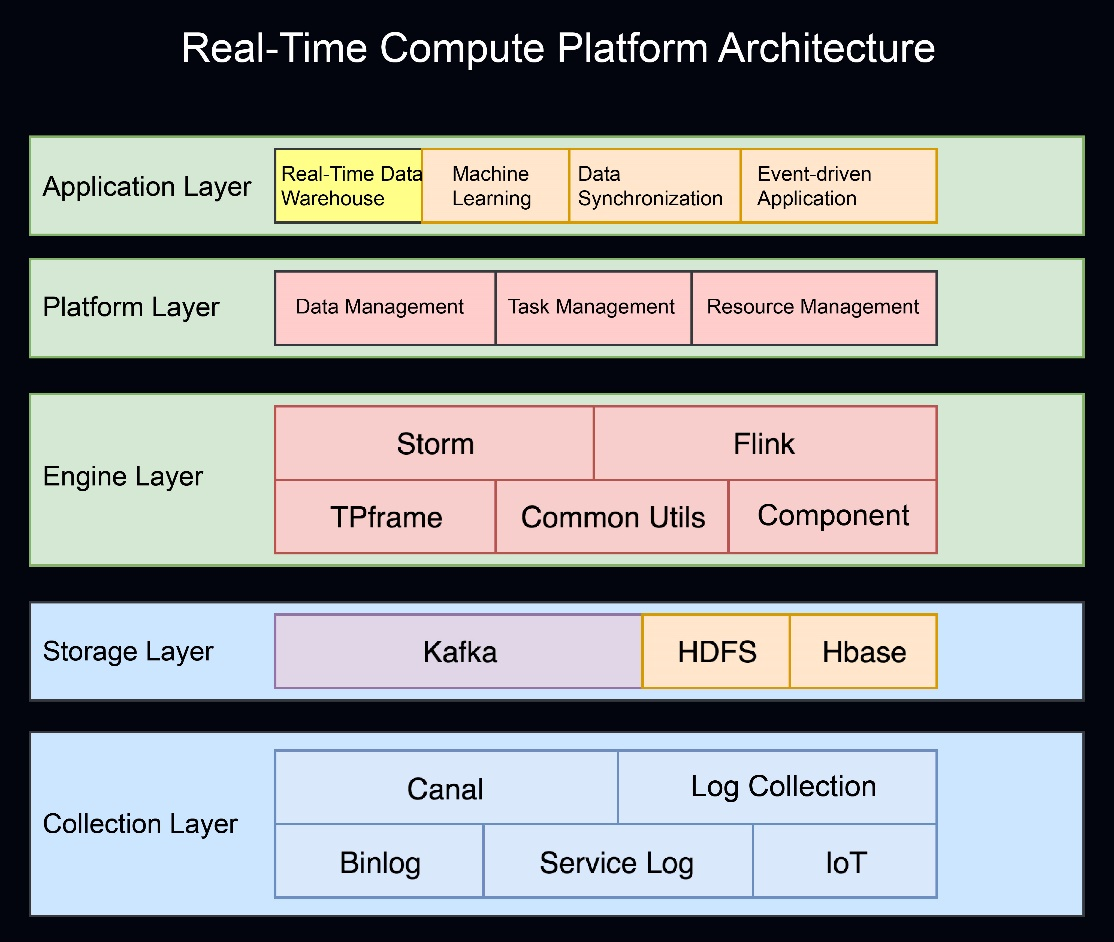
The underlying layer collects real-time user data, including binary logs, backend service logs, and IoT data, which are processed by the log collection team and the database collection team and then collected to Apache Kafka. The data is used in both real-time computing and offline computing.
Above the collection layer is the storage layer. In addition to using Apache Kafka as a message channel, this layer stores status data based on HDFS and stores dimension data based on HBase.
Above the storage layer is the engine layer, which includes Apache Storm and Flink. The real-time computing platform encapsulates frameworks and supports public packages and components for users at the engine layer.
Above the engine layer is the platform layer, which manages data, tasks, and resources.
The top layer of the architecture is the application layer, which includes real-time data warehouses, machine learning, data synchronization, and event-driven applications.
Meituan-Dianping's real-time computing platform mainly provides job and resource management functions.
Job management includes job configuration, release, and status functions.
Resource management includes multi-tenant resource isolation and resource delivery and deployment.
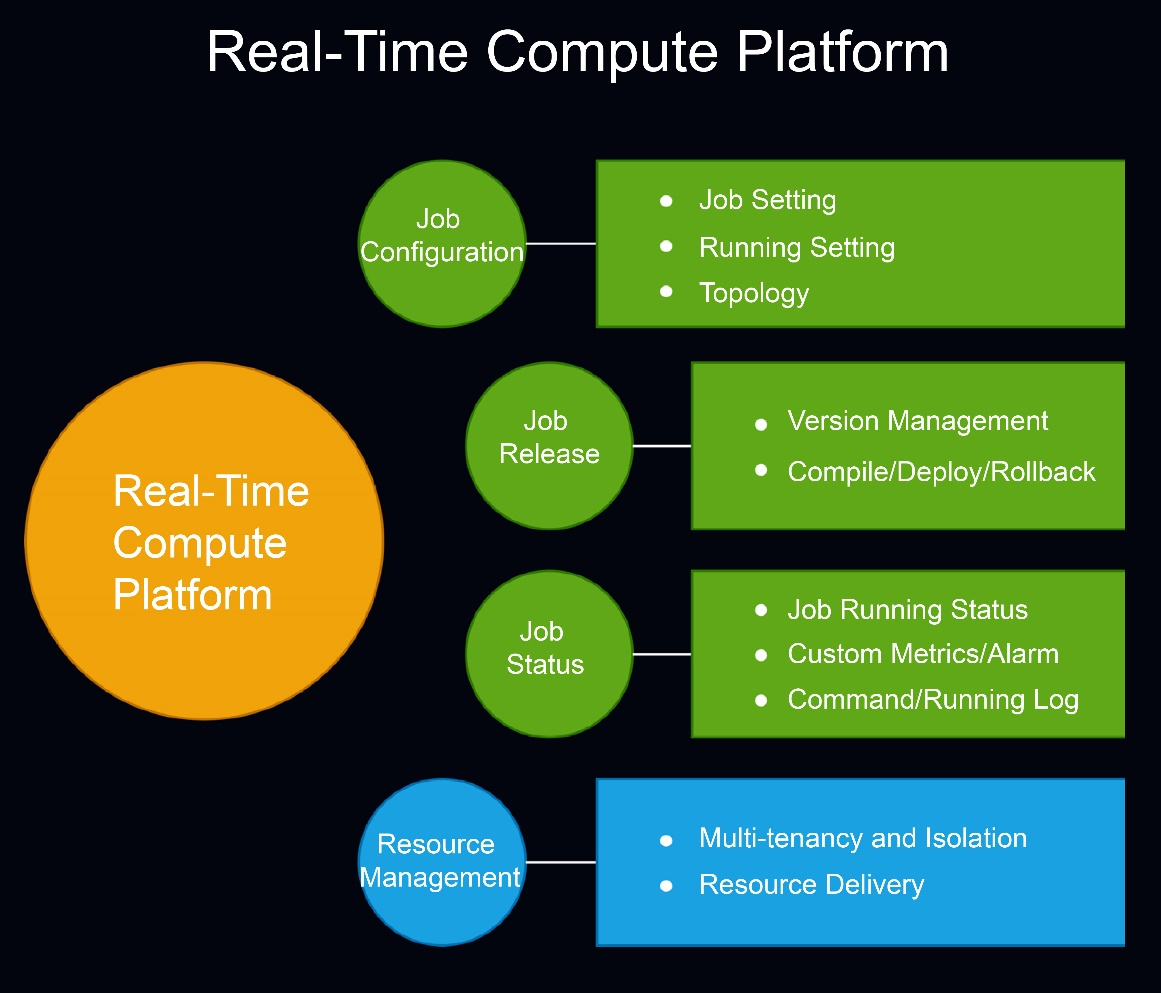
As mentioned earlier, Meituan-Dianping's real-time computing platform focuses on security, ease of use, and stability and it assumes an important role for business data warehouses. We will share some examples of business data warehouses.
Our first example looks at traffic. The traffic data warehouse is a basic service for traffic businesses. For business channels, there are tracking points for different channels and tracking data on different pages. After passing through the log collection channel, traffic is distributed to different business channels at the basic details layer, such as the Meituan channel and take-out channel.
Finer-grain splitting is performed based on business channels, such as exposure logs, preferences, and recommendations. In this case, data can be provided as streams to downstream service providers, and this approach can also be used to analyze traffic in real time.
The following figure shows an architectural diagram of the traffic data warehouse on the right, which has four layers. From the bottom up, the SDK layer includes the frontend, mini program, and app SDKs. The collection layer stores tracking logs in Nginx and sends the logs to Apache Kafka at the storage layer through the log collection channel. At the computing layer, the traffic team encapsulates upper-layer SQL statements based on Apache Storm and dynamically updates the SQL statements. Jobs do not have to be restarted in the event of SQL changes.
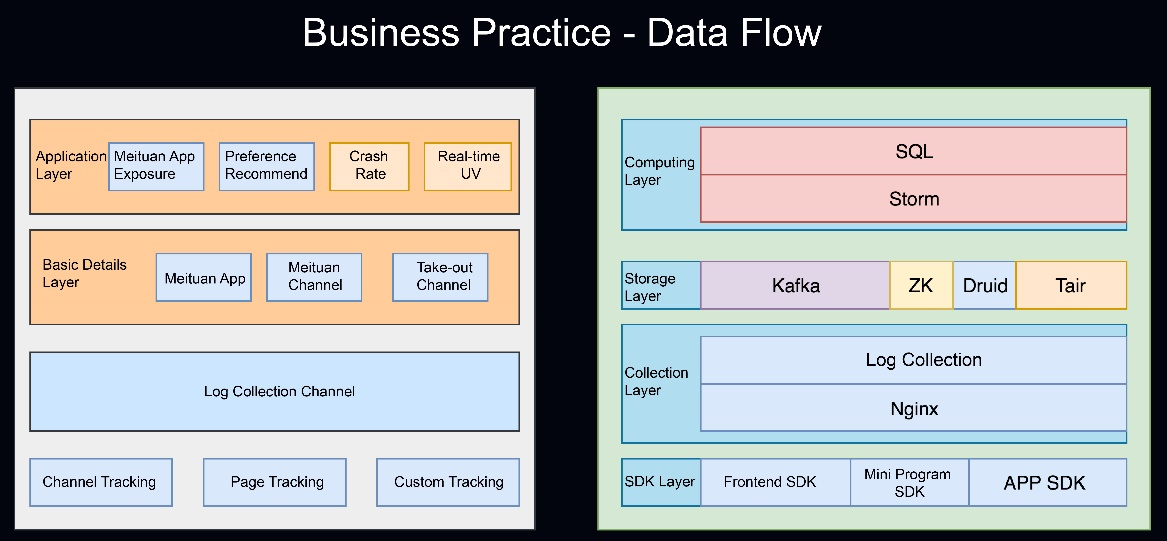
Here, we will give another example of a traffic data warehouse: one used to verify real-time ad performance. The following figure shows the comparison of real-time ad performance on the left. Ad hits are divided into page view (PV) hits, server PV (SPV) hits, client PV (CPV) exposure hits, and CPV click hits. Each hit contains a traffic request ID and a hit experiment path. You can join all logs based on the request ID and the hit experiment path to obtain all the data required for a request and store the data in Durid to verify the performance, including the actual click-through rate (CTR) and estimated CTR.
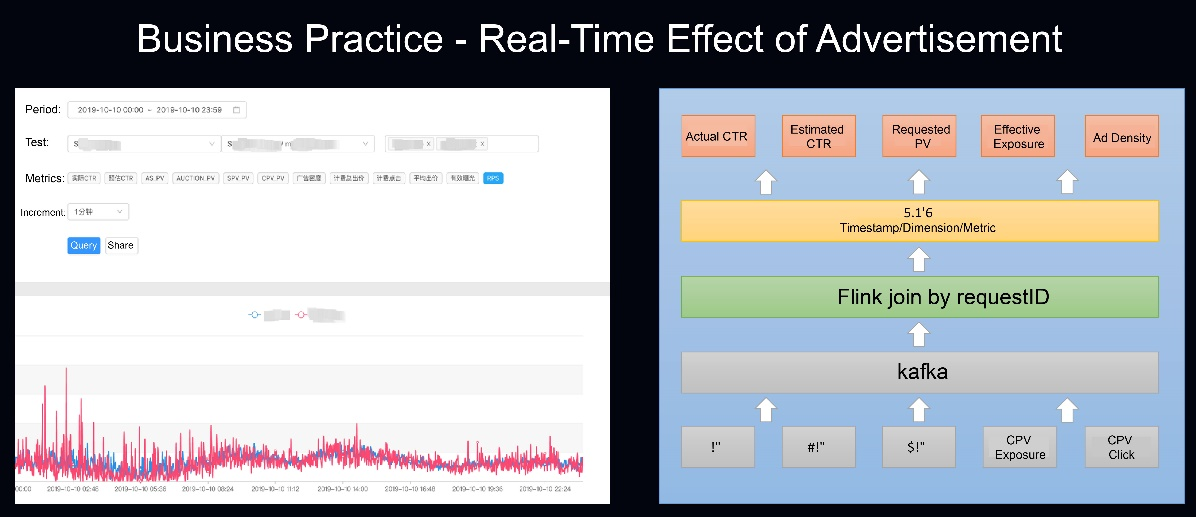
Another business data warehouse practice is instant delivery. Real-time data assumes an important role in instant delivery marketing strategies. Take delivery time estimation as an example. The delivery time measures the delivery difficulty for delivery staff, which is divided into multiple periods. The delivery data warehouse cleans and extracts feature data based on Apache Storm so that the algorithm team can train and obtain the time estimation result. This process involves the seller, delivery staff, and user, with many data features and a large data volume.
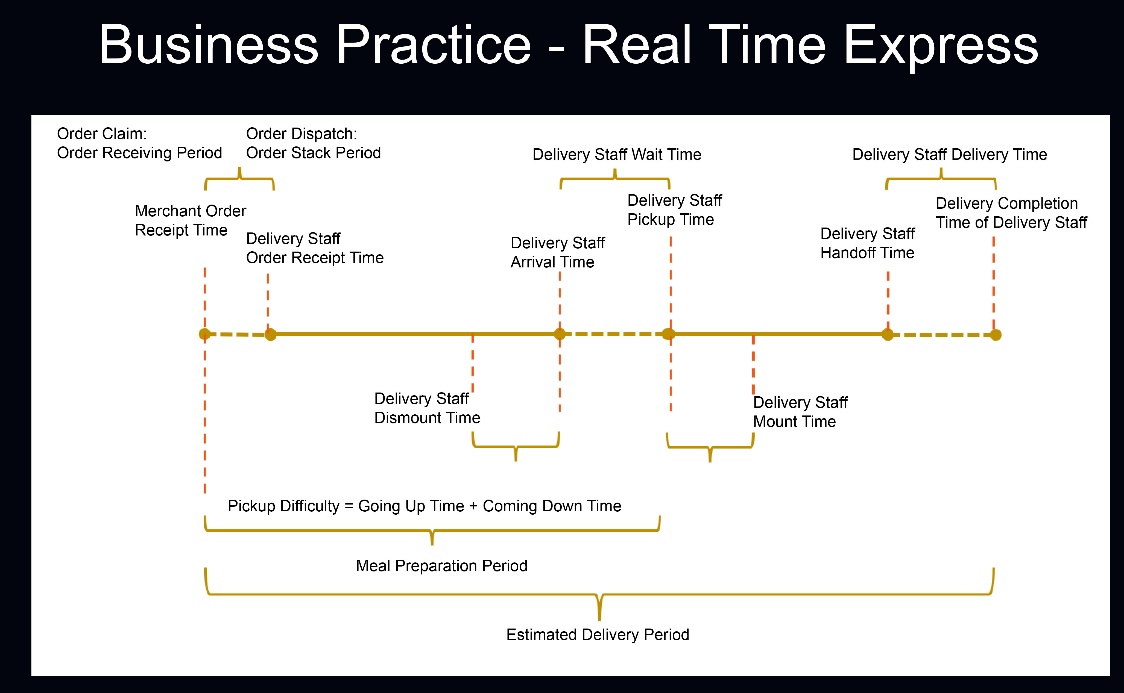
Real-time business data warehouses are divided into traffic, business, and feature data warehouses.
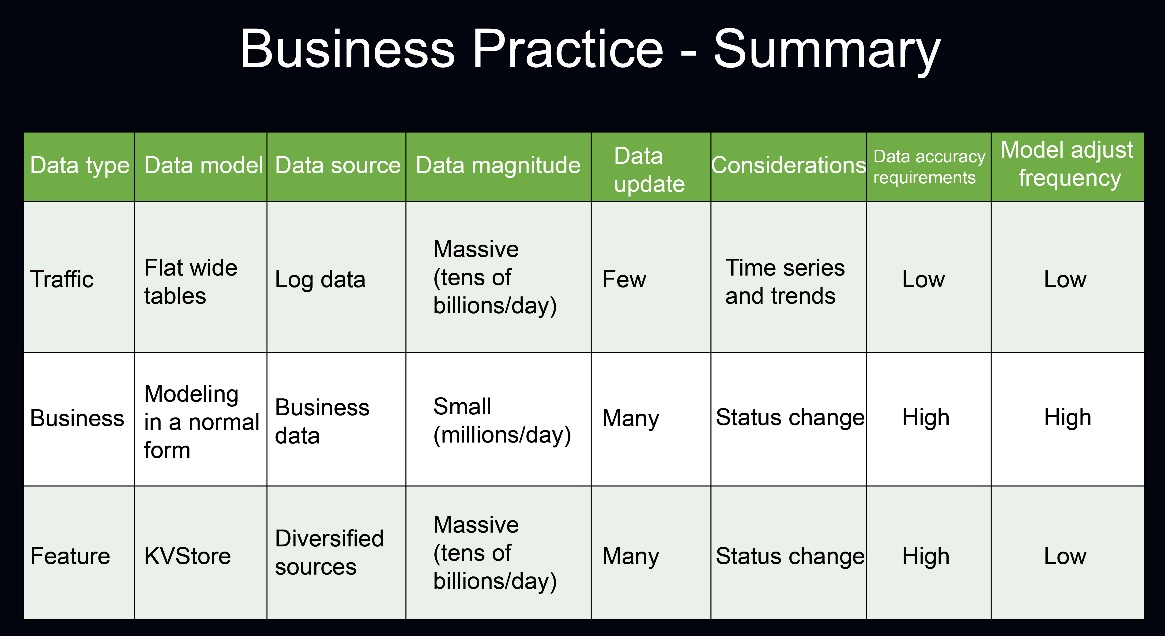
This section describes the evolution of our real-time data warehouses and the development ideas behind Meituan-Dianping's real-time data warehouse platform.
To organize and manage data more effectively, the offline data warehouse model is divided into the operational data store (ODS) layer, data warehouse detail (DWD) layer, data warehouse service (DWS) layer, and application layer from bottom up. Ad hoc queries are implemented through Presto, Hive, and Spark.
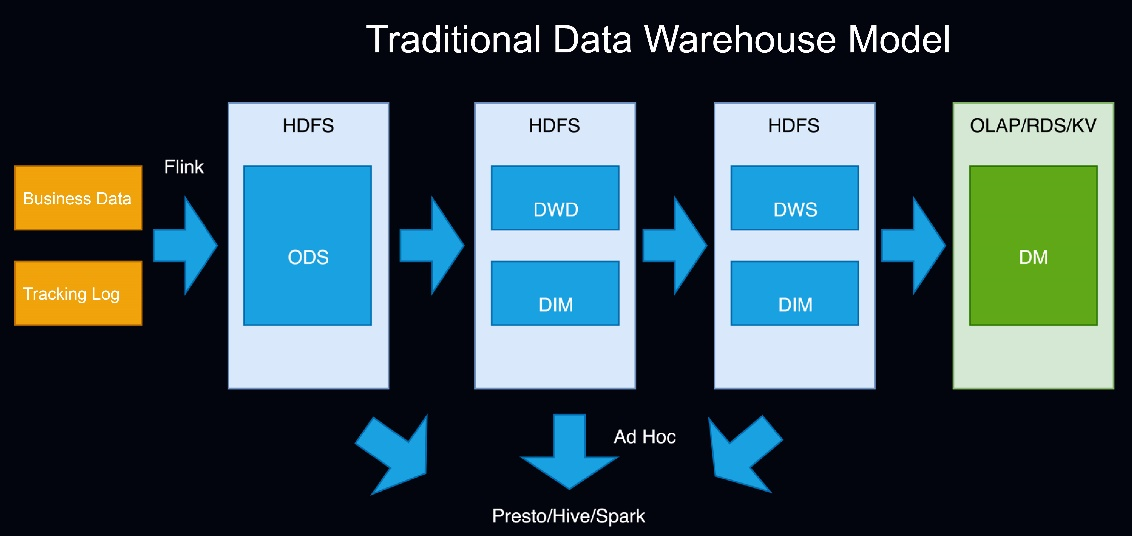
The real-time data warehouse model is also divided into the ODS layer, DWD layer, DWS layer, and application layer. However, the real-time data warehouse model differs from the offline data warehouse model in processing methods. For example, data at the DWD and DWS layers is stored in Apache Kafka, dimension data is stored in KVStores, such as HBase and Tair, to improve performance, and ad hoc queries can be performed by using Flink.
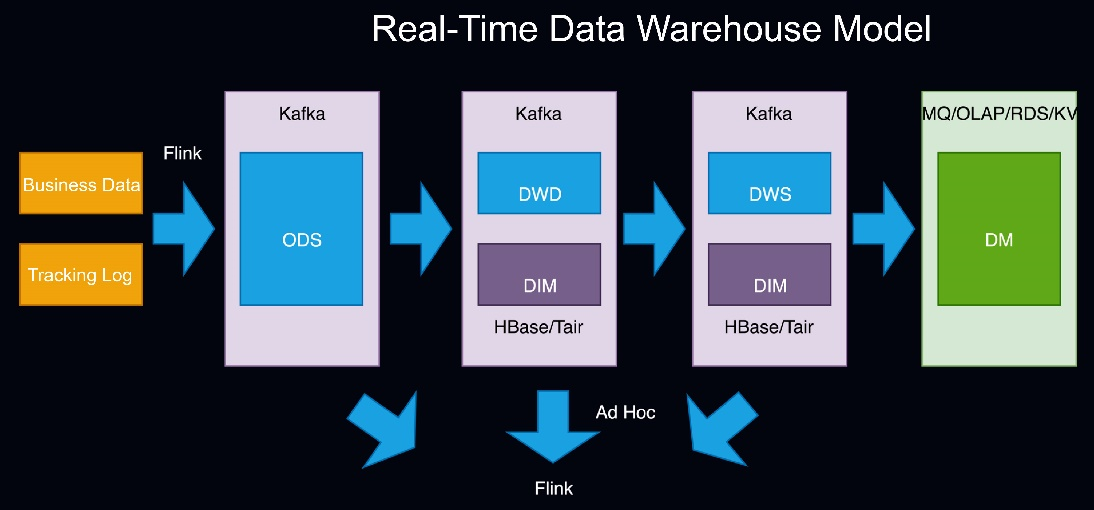
Service providers can also use a quasi-real-time data warehouse model, which is not completely based on streams. Instead, data at its DWD layer is imported to Online Analytical Processing (OLAP) and then summarized and further processed based on the OLAP computing capability.
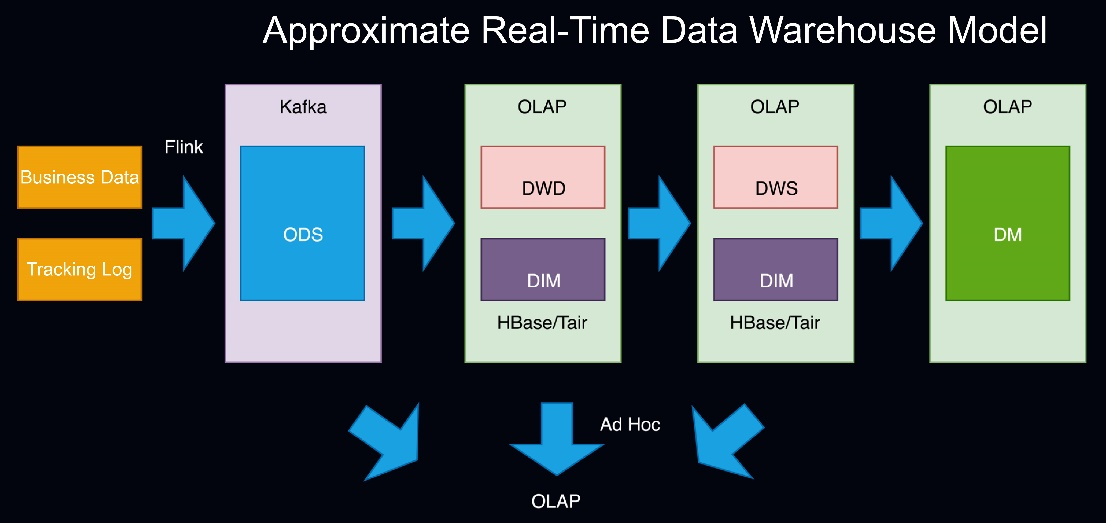
Real-time data warehouses and offline data warehouses can be compared in the following aspects:
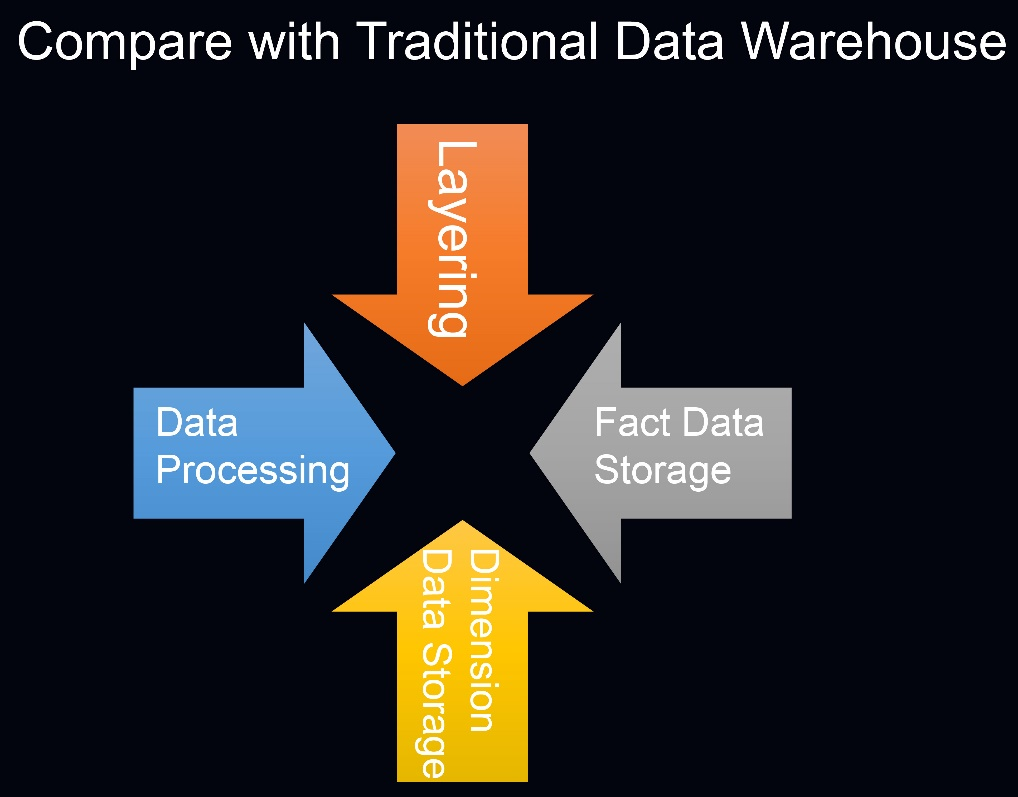
The following figure compares the construction solutions for quasi-real-time data warehouses and real-time data warehouses. These solutions are implemented based on OLAP engines or stream computing engines and update data within minutes or seconds respectively.
In summary, the OLAP engine-based construction method is a compromise to improve timeliness and development efficiency when dealing with relatively small data volumes and low business traffic. Real-time data warehouses that use stream computing engines are more aligned with future development trends.

Through business practices, we discovered that the metadata of different businesses was separated, and business development personnel tended to use SQL statements to develop both offline data warehouses and real-time warehouses, which required more O&M tools. Therefore, we planned an all-in-one solution to streamline the entire process.
This all-in-one solution provides users with a data development platform and a metadata management platform. We provide the OLAP production platform to solve OLAP production problems in modeling methods, production task management, and resources. The following figure shows the data security system, resource system, and data governance on the left, which can be shared by offline data warehouses and real-time warehouses.
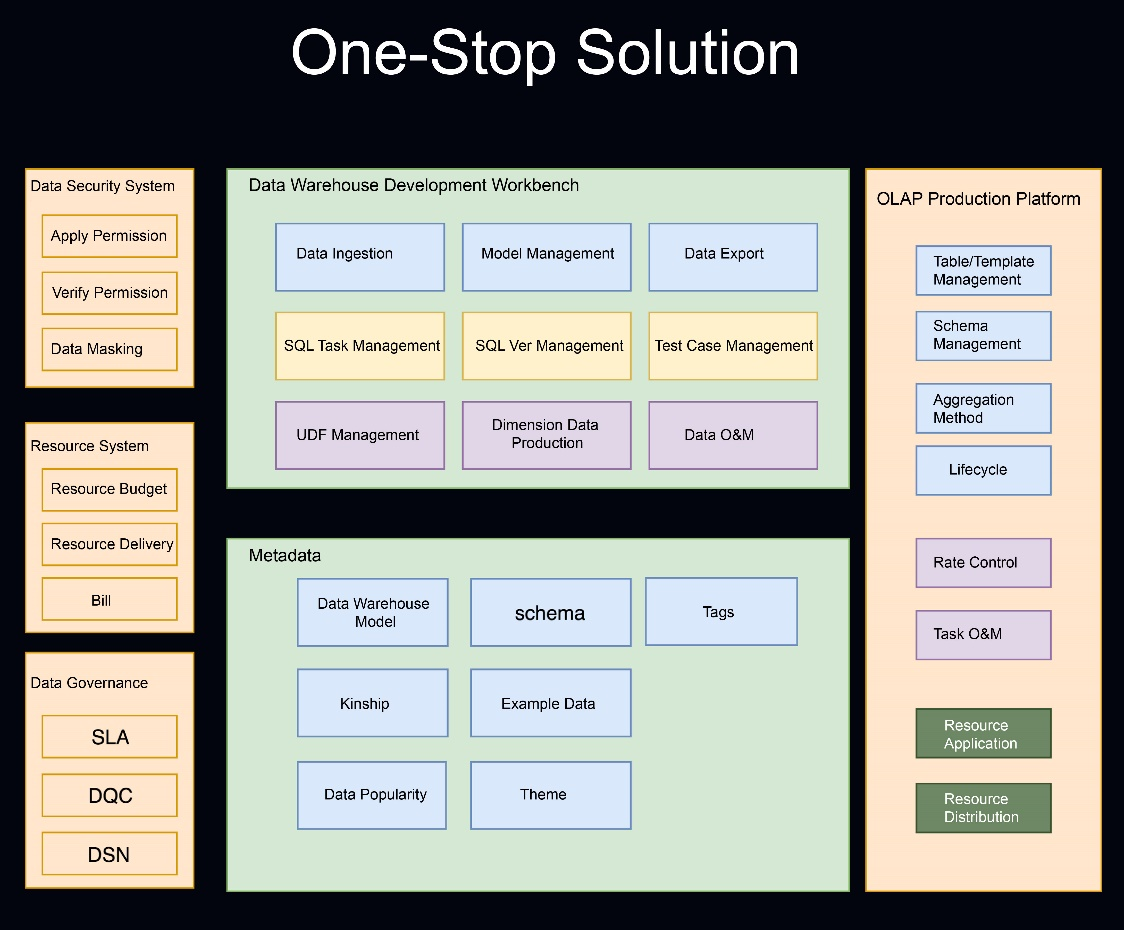
Flink is used to construct the real-time data warehouse platform that implements the following functions, which are also the main concerns of the real-time data warehouse platform:
Table API, and Flink SQL.
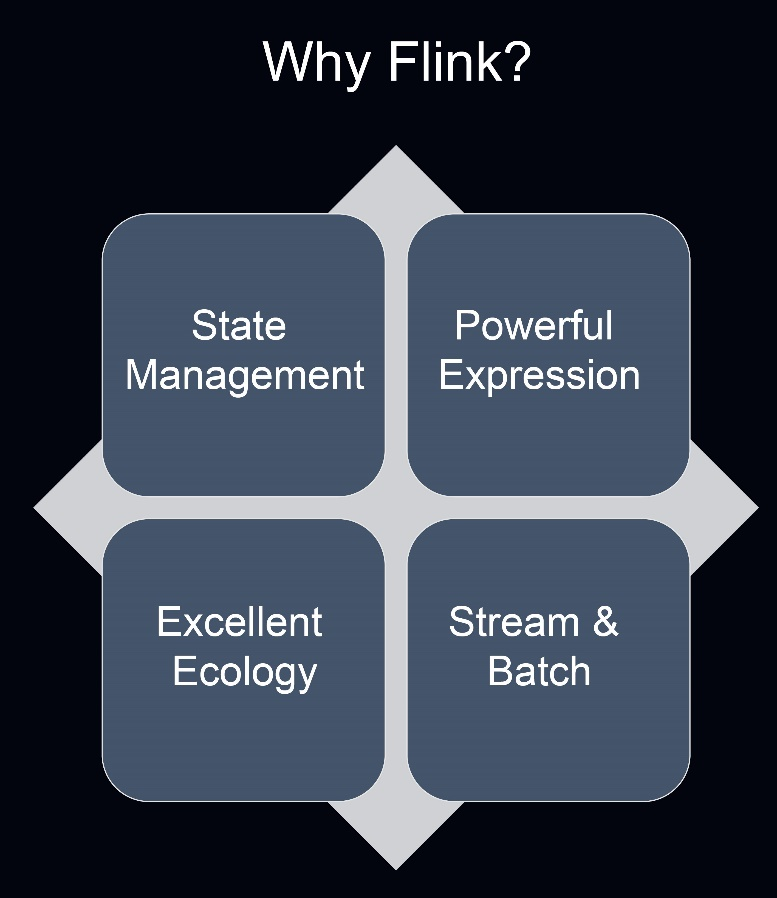
Construction Ideas
The construction of the real-time data warehouse platform is divided into four layers from the outside in. The platform needs to provide users with abstract expression capabilities, including message expression, data expression, computing expression, and stream and batch processing.
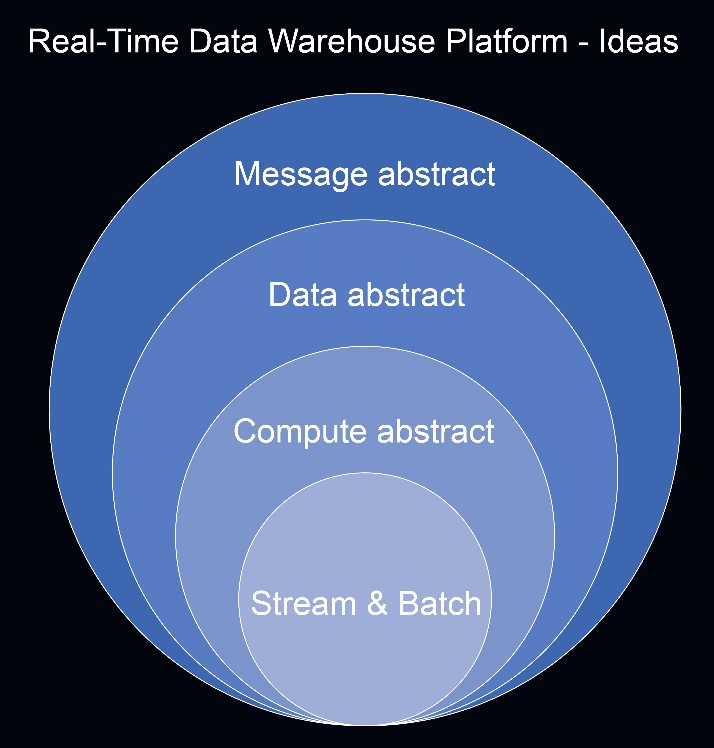
Real-time data warehouse platform architecture
The following figure shows the architecture of Meituan-Dianping's real-time data warehouse platform. From the bottom up, the resource layer and storage layer reuse the capabilities of the real-time computing platform, and the engine layer implements some extended capabilities based on Flink Streaming, including user-defined function (UDF) integration and Connector integration. The SQL layer is extracted based on Flink SQL and is mainly responsible for parsing, verification, and optimization. The platform layer includes the development workbench, metadata, UDF platform, and OLAP platform. The top layer is the application layer, including real-time reports, real-time OLAP, real-time dashboards, and real-time features.
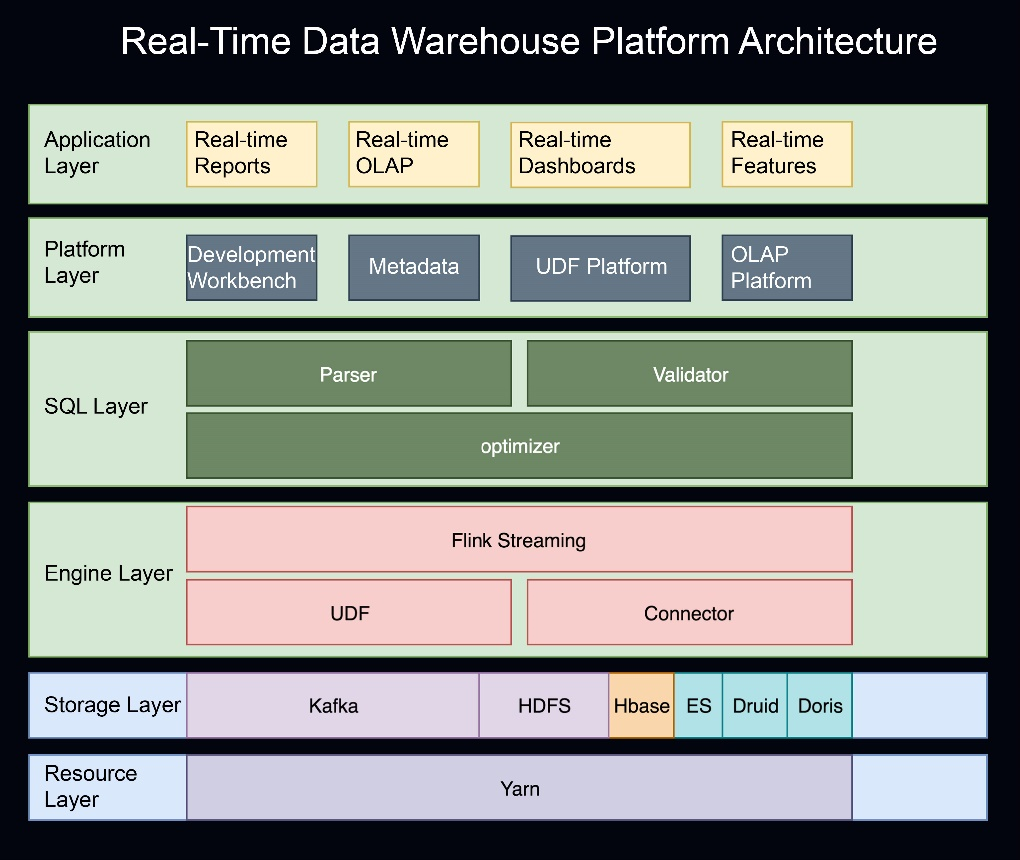
Message expression - data access
The data formats of binary logs, tracking logs, backend logs, and IoT data are inconsistent. Therefore, Meituan-Dianping 's real-time data warehouse platform provides a data access process to help users synchronize data to the ODS layer by unifying the messaging protocol and shielding processing details.
The following figure shows an example of the access process on the left. For binary logs, the real-time data warehouse platform also supports database sharding and table sharding so that it can collect the data of different database shards and table shards of the same business in the same ODS table according to business rules.
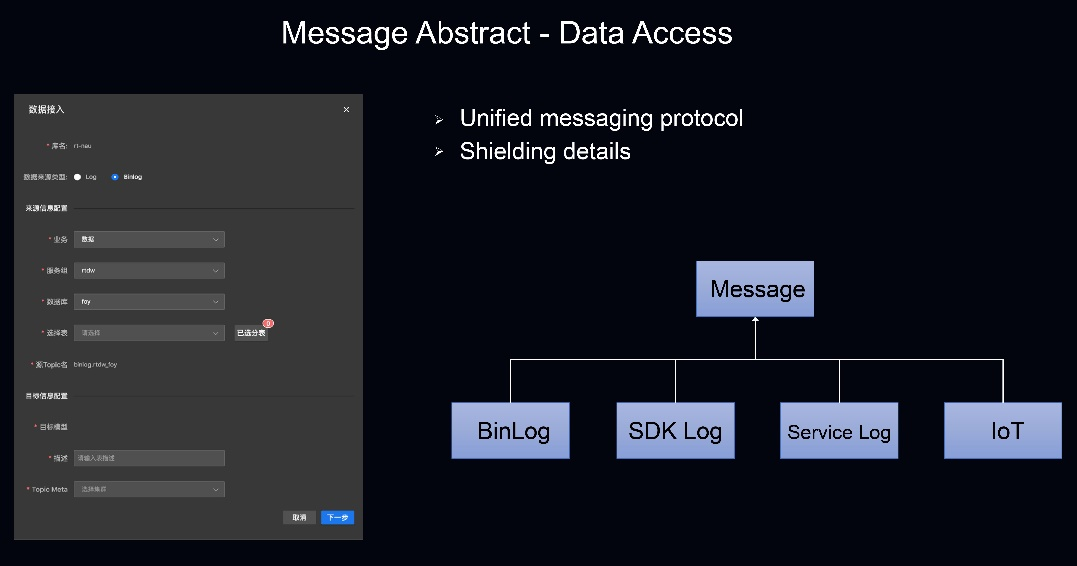
Computing expression - extended DDL
Meituan-Dianping's real-time data warehouse platform extends a dynamic-link library (DDL) based on Flink, which aims to build a metadata system and integrate internal mainstream real-time storage, including KVStore data and OLAP data. The development workbench and the metadata system are interconnected. Therefore, many data details do not need to be declared in the DDL. Users only need to declare the data name and some runtime settings, such as consumption from the latest or earliest message in Message Queue (MQ) or from a timestamp. Other data can be accessed in the same way.
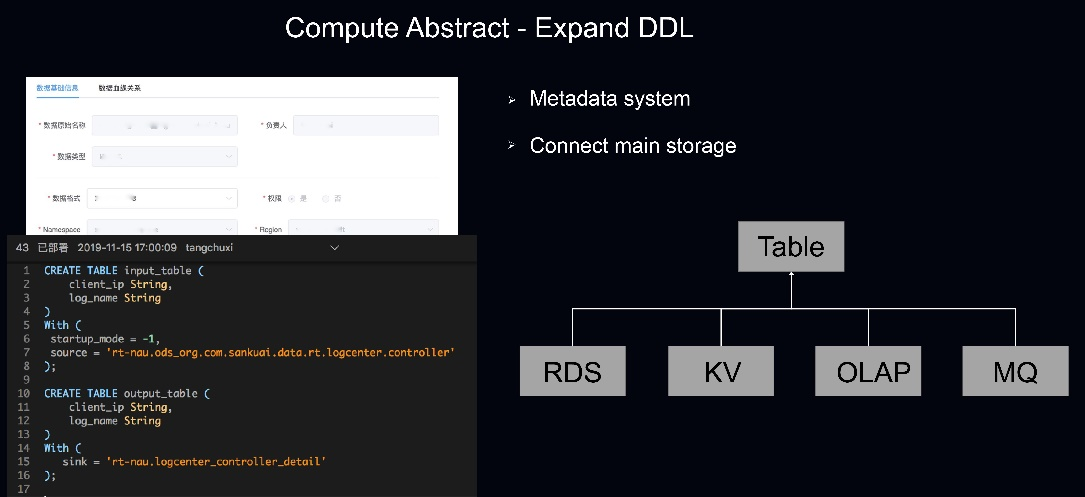
Computing expression - UDF platform
A UDF platform involves the following aspects:
UDFs are widely used. The UDF platform supports not only real-time data warehouses but also other application scenarios, such as offline data warehouses, machine learning, and query services. The following figure shows UDF use cases on the right. The left shows the UDF development process, in which users only need to pay attention to the registration process, while the platform completes the compiling, packaging, testing, and uploading processes. The right part shows the UDF use process, in which users only need to declare the UDF, while the platform performs parsing and verification, obtains the path, and performs integration upon job submission.
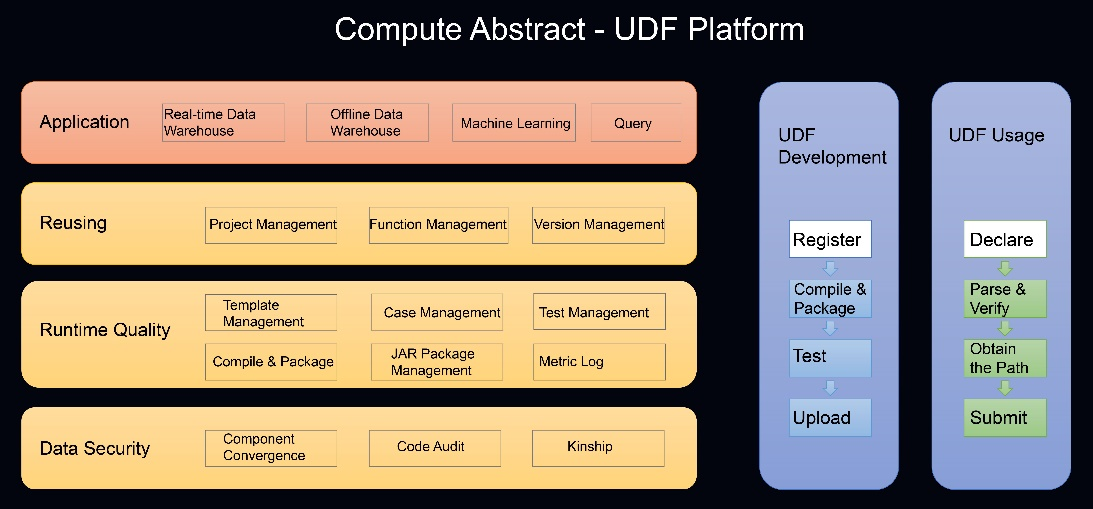
Finally, let's take a look at the development workbench of the real-time data warehouse platform, which integrates the management of models, jobs, and UDFs in the web integrated development environment (IDE). In the web IDE, users can develop data by using SQL statements. The platform manages some SQL versions and allows users to roll back to the deployed version.
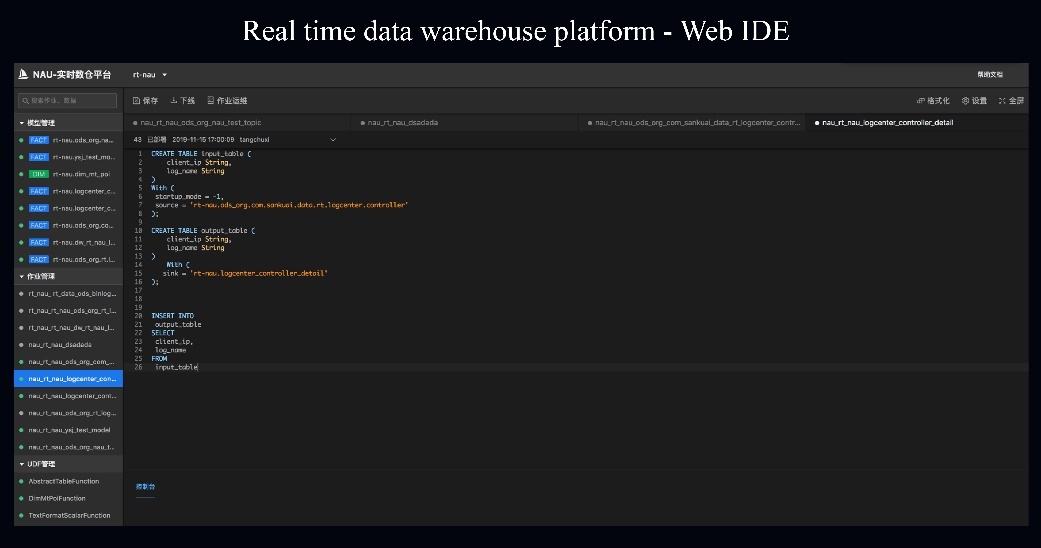
In terms of real-time computing, Meituan-Dianping's real-time computing platform has thousands of nodes, which may be expanded to tens of thousands of nodes in the future. This poses new needs for resource optimization. A real-time task may require many resources during peak hours but less resources during off-peak hours.
In addition, the peaks can also change, so the allocated resources may be insufficient if the business grows. Therefore, automatic resource optimization is required to adjust the maximum value based on the peak traffic and allow jobs to quickly scale down to automatically adapt to traffic reduction. We can obtain the relational functions of operators, traffic, and resources according to the historical operations of each task and operator to adjust the resources in response to traffic changes.
We also need to consider how to use resources after optimization. To ensure availability, real-time tasks and offline tasks are generally deployed separately. Otherwise, the bandwidth and I/O may be fully occupied by offline computing, causing a delay in real-time tasks. To improve resource usage, real-time tasks and offline tasks can be deployed together, or some tasks with moderate timeliness requirements can be processed in streams. This requires finer-grained resource isolation and faster resource release.
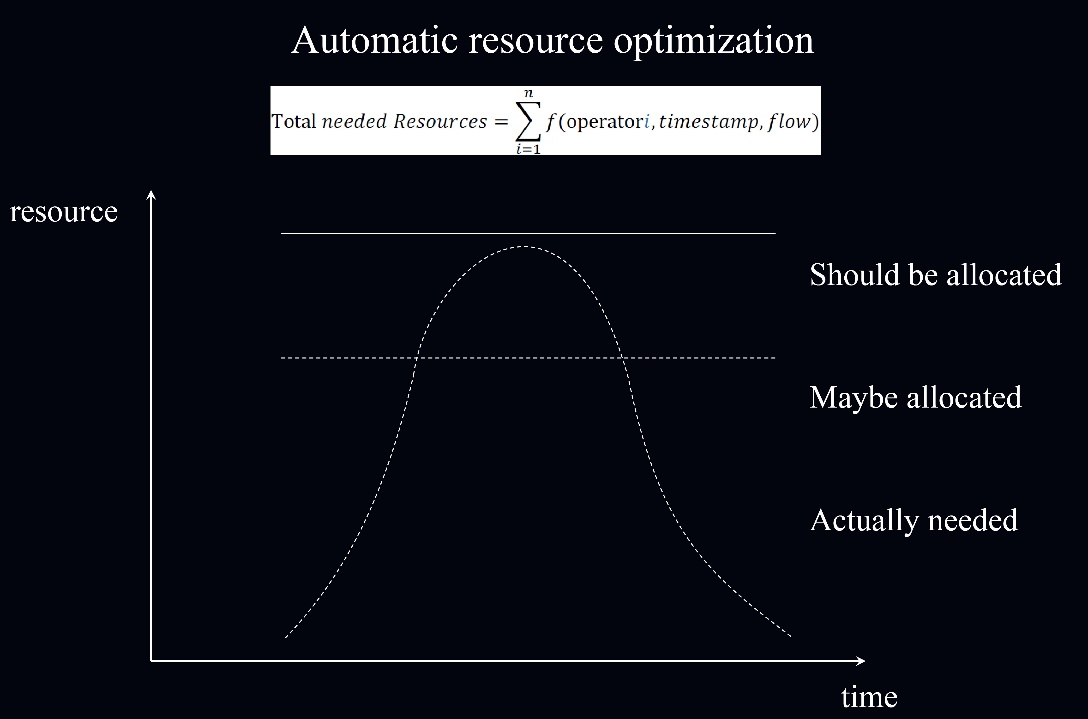
The construction of a real-time data warehouse includes the following steps.
At present, Meituan-Dianping's approach to real-time data warehouse platform construction still focuses on unified expression. We still have a long way to go to reach this goal.
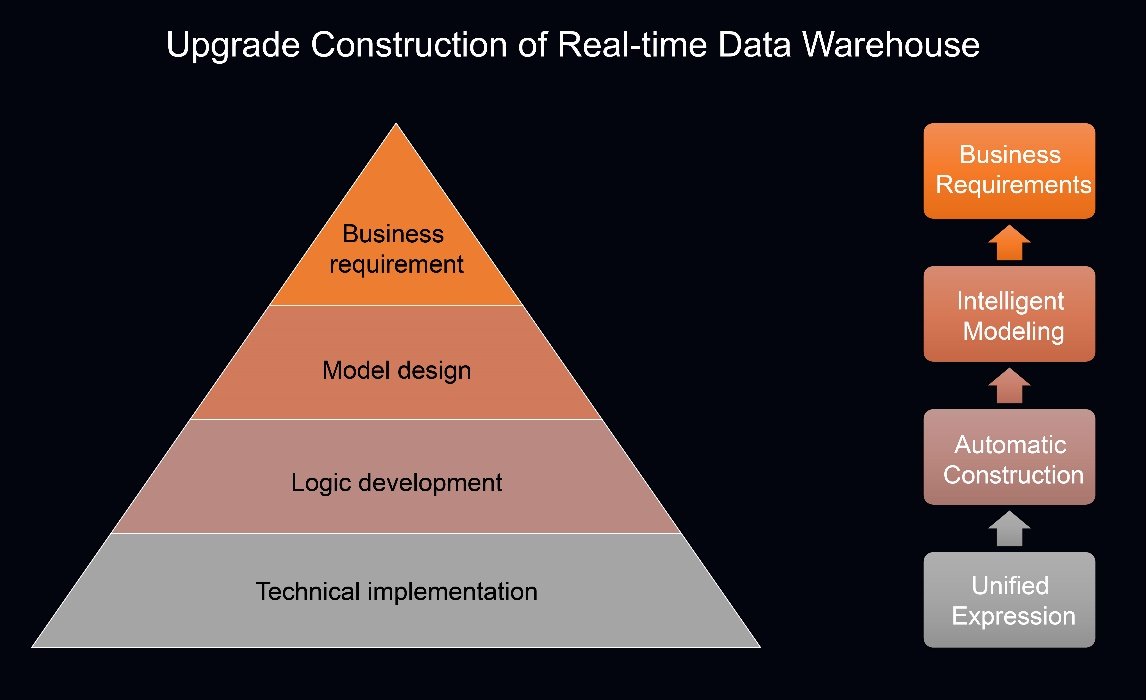
Netflix: Evolving Keystone to an Open Collaborative Real-time ETL Platform

206 posts | 54 followers
FollowApache Flink Community China - September 27, 2020
Apache Flink Community China - September 27, 2020
Alibaba Clouder - December 2, 2020
Alibaba EMR - January 10, 2023
Apache Flink Community China - June 8, 2021
Apache Flink Community China - November 5, 2020

206 posts | 54 followers
Follow Realtime Compute for Apache Flink
Realtime Compute for Apache Flink
Realtime Compute for Apache Flink offers a highly integrated platform for real-time data processing, which optimizes the computing of Apache Flink.
Learn More Big Data Consulting for Data Technology Solution
Big Data Consulting for Data Technology Solution
Alibaba Cloud provides big data consulting services to help enterprises leverage advanced data technology.
Learn More MaxCompute
MaxCompute
Conduct large-scale data warehousing with MaxCompute
Learn More Big Data Consulting Services for Retail Solution
Big Data Consulting Services for Retail Solution
Alibaba Cloud experts provide retailers with a lightweight and customized big data consulting service to help you assess your big data maturity and plan your big data journey.
Learn MoreMore Posts by Apache Flink Community